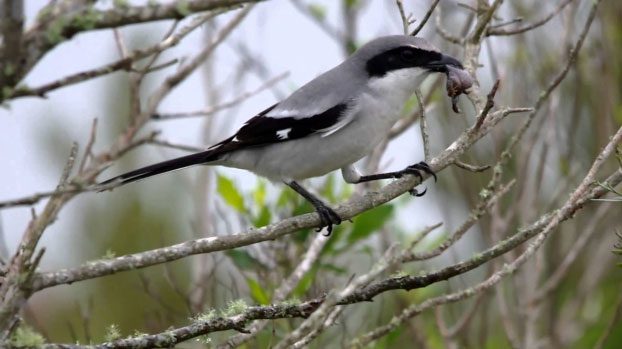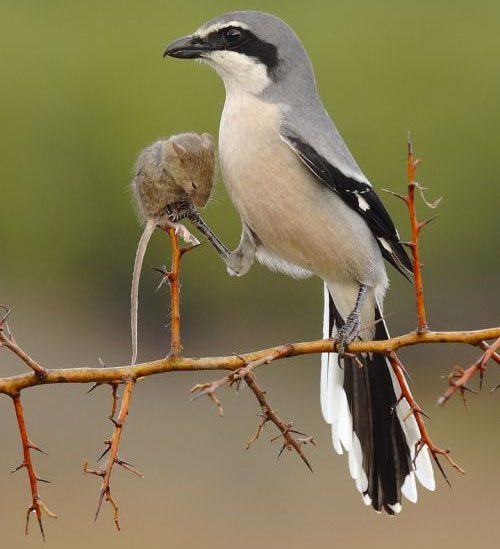The butcher bird, known for its beautiful and adorable appearance, has a rather gruesome way of hunting that many people are unaware of.
Most butcher birds are found in Europe or Africa, with only two species present in North America.

The butcher bird is famous for its beautiful and adorable appearance.
They typically measure between 20 to 23 cm in length and weigh around 34 to 51 grams. These birds have been gifted by nature with a long black stripe over their eyes, resembling a mask.
The butcher bird is also referred to as the “butcher” due to its distinctive hunting and feeding habits. Whenever it catches its prey, which usually consists of insects, lizards, toads, snakes, and even small birds, it will “pin” its meal onto a thorn or sharp branch.
Their prey mainly consists of invertebrates, but they occasionally eat small vertebrates, including reptiles, amphibians, bats, and birds.
The large-billed butcher bird can take down prey heavier than itself. It patiently waits on high branches, sometimes perching on telephone wires, looking for potential meals. Once it identifies a target, it swoops down and uses its sharp beak to repeatedly peck at the nape of its prey to incapacitate it.
A 2018 study showed that when targeting larger prey, the large-billed butcher bird grabs its neck and shakes it with a force comparable to a passenger in a car being hit from behind. This shaking injures the prey’s spine. Essentially, the hunter uses the weight of its prey to subdue it.
The butcher bird impales its prey to store it. The sharp thorns of trees or fences serve as a food storage unit for it to return and feast later.

Whenever it catches its prey, it will “pin” its meal onto a thorn or sharp branch.
This unique behavior allows the butcher bird to effectively tear apart its prey.
These birds are quite clever when it comes to selecting food. For example, the Romalea guttata grasshopper has toxic properties that can induce vomiting or even be fatal to some predators. However, when the large-billed butcher bird impales the grasshopper and returns after a few days, it can safely consume it.
The breeding season for butcher birds occurs from February to June each year. Males engage in hunting and impaling prey as an effective way to attract mates.
When they come together, females build nests using twigs, bark, and roots, lining the inside with moss and leaves. Each brood consists of only 5 to 6 eggs, which are incubated for about 15 to 17 days. The chicks remain in the nest for 16 to 20 days before being “kicked” out by their parents to fend for themselves.


















































